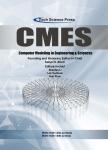版权所有:内蒙古大学图书馆 技术提供:维普资讯• 智图
内蒙古自治区呼和浩特市赛罕区大学西街235号 邮编: 010021

作者机构:Najran Univ Coll Sci & Arts Sharourah Dept Comp Sci Najran 68378 Saudi Arabia
出 版 物:《CMES-COMPUTER MODELING IN ENGINEERING & SCIENCES》 (CMES Comput. Model. Eng. Sci.)
年 卷 期:2025年第142卷第3期
页 面:2869-2892页
核心收录:
学科分类:12[管理学] 1201[管理学-管理科学与工程(可授管理学、工学学位)] 08[工学] 0701[理学-数学]
基 金:Deanship of Graduate Studies and Scientific Research at Najran University [NU/EFP/SERC/13/166]
主 题:Fog computing scheduling resource management firefly algorithm genetic algorithm ant colony optimization
摘 要:The Internet of Things (IoT) has emerged as an important future technology. IoT-Fog is a new computing paradigm that processes IoT data on servers close to the source of the data. In IoT-Fog computing, resource allocation and independent task scheduling aim to deliver short response time services demanded by the IoT devices and performed by fog servers. The heterogeneity of the IoT-Fog resources and the huge amount of data that needs to be processed by the IoT-Fog tasks make scheduling fog computing tasks a challenging problem. This study proposes an Adaptive Firefly Algorithm (AFA) for dependent task scheduling in IoT-Fog computing. The proposed AFA is a modified version of the standard Firefly Algorithm (FA), considering the execution times of the submitted tasks, the impact of synchronization requirements, and the communication time between dependent tasks. As IoT-Fog computing depends mainly on distributed fog node servers that receive tasks in a dynamic manner, tackling the communications and synchronization issues between dependent tasks is becoming a challenging problem. The proposed AFA aims to address the dynamic nature of IoT-Fog computing environments. The proposed AFA mechanism considers a dynamic light absorption coefficient to control the decrease in attractiveness over iterations. The proposed AFA mechanism performance was benchmarked against the standard Firefly Algorithm (FA), Puma Optimizer (PO), Genetic Algorithm (GA), and Ant Colony Optimization (ACO) through simulations under light, typical, and heavy workload scenarios. In heavy workloads, the proposed AFA mechanism obtained the shortest average execution time, 968.98 ms compared to 970.96, 1352.87, 1247.28, and 1773.62 of FA, PO, GA, and ACO, respectively. The simulation results demonstrate the proposed AFA s ability to rapidly converge to optimal solutions, emphasizing its adaptability and efficiency in typical and heavy workloads.